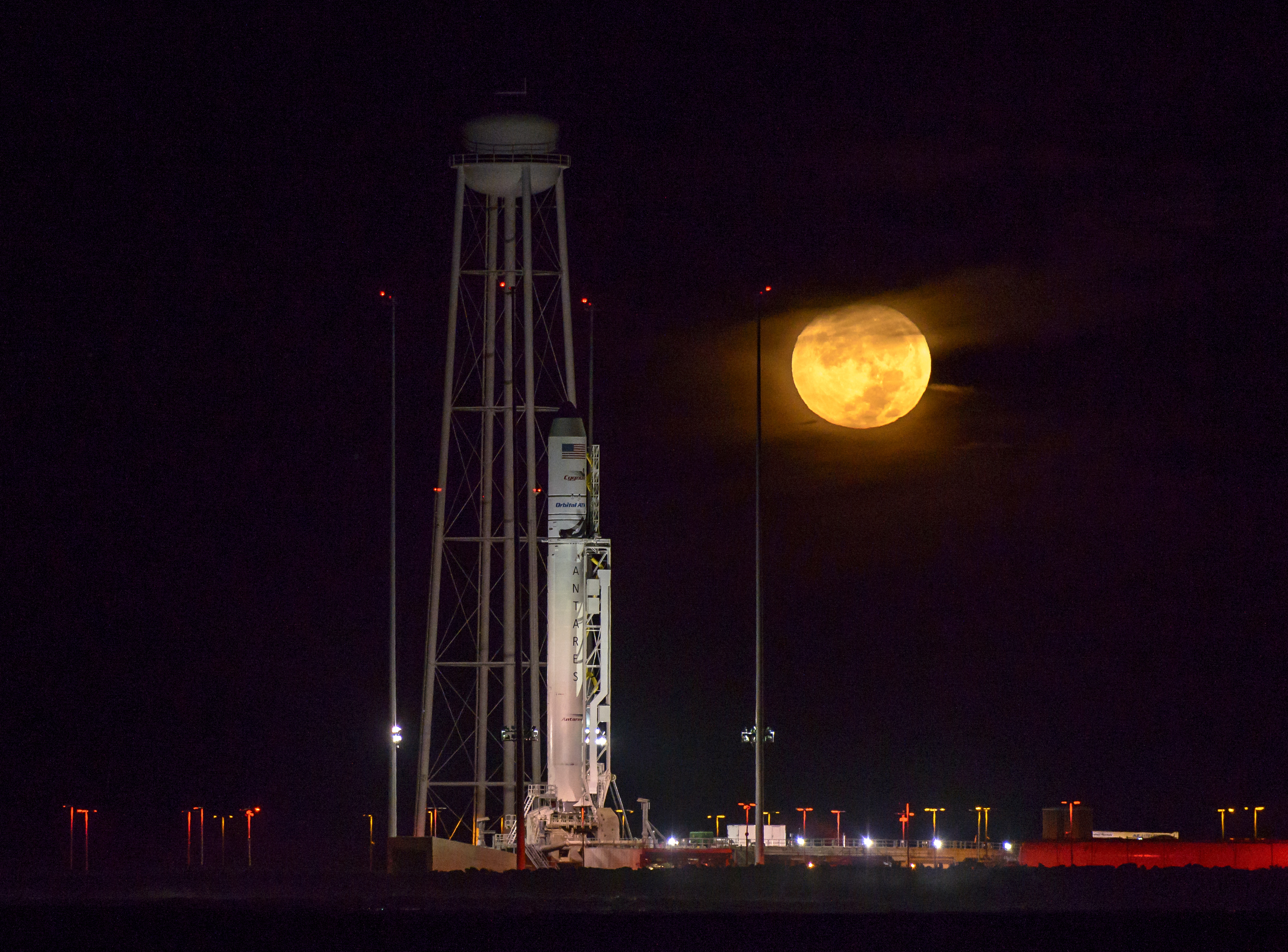
by Kerry SHERIDAN
MIAMI, United States (AFP) — Orbital ATK is poised to launch an Antares rocket Monday for the first time since a massive explosion after liftoff two years ago en route to the International Space Station.
The new Antares 230 rocket aims to propel an unmanned cargo capsule, called Cygnus, to the orbiting outpost carrying 5,290 pounds (2,400 kilograms) of supplies, food and science experiments.
The launch is scheduled at 7:40 pm (2340 GMT) from Wallops Island, Virginia, the US company said.
The previous Antares rocket exploded in a fireball on October 28, 2014, just seconds after liftoff, destroying the cargo capsule and damaging the launch pad.
After an investigation, Orbital blamed the accident on a flaw in the rocket’s AJ26 engines, which had been made four decades earlier in the former Soviet Union, and were supplied by Aerojet Rocketdyne.
The Antares 230 is powered by new RD-181 engines from Russian manufacturer NPO Energomash.
“These engines have flown in slightly different variations on other rockets,” said Frank Culbertson, president of Orbital ATK, in a news conference Saturday.
Since the blast, the launchpad has been rebuilt at a cost of $15 million, and the rocket has been overhauled to be more powerful.
“So yeah, we are always nervous, but I am extremely confident in this team and in this hardware,” he told reporters, adding he was “optimistic” about a successful launch.
The weather forecast was 100 percent favorable for Monday, according to NASA, the US space agency.
The launch was initially planned for Thursday, October 13, but was rescheduled a few times.
A liftoff for Sunday was scratched due to a ground support cable that “did not perform as expected during the pre-launch checkout,” the company said in a statement.
Cargo missions resumed
In December 2014, Orbital resumed cargo missions to space as part of a $1.9 billion contract with NASA.
But instead of the Antares rocket, the company used a United Launch Alliance Atlas V rocket to propel the cargo to space from a launchpad in Cape Canaveral, Florida.
After the 2014 blast, the Cygnus cargo ship was changed to be able to carry a larger payload.
Monday could mark the third such flight of a similarly improved Cygnus vehicle, with new solar arrays and fuel tanks.
The cargo ship is carrying food and supplies for the six-member astronaut crew in orbit, including science experiments to test the behavior of fire in space.
In addition to Orbital ATK, US company SpaceX is engaged in a contract with NASA to supply the space station, using its Falcon 9 rocket and Dragon cargo ship.
SpaceX, too, has suffered explosions after launch, including one in June 2015 that destroyed a Falcon 9 rocket and Dragon cargo ship headed to the space station, and a blast last month that blew up a Falcon 9 rocket and its Israeli satellite during a routine launchpad test.
The 30-year US space shuttle program was retired in 2011, leaving the United States no program for reaching space.
For now, the world’s astronauts must purchase seats aboard Russia’s Soyuz spaceships at a cost of some $71 million per seat.
Orbital and SpaceX, however, can ship cargo to orbit.
NASA has also signed contracts with SpaceX and Boeing to begin launching astronauts to space in the next two years.
© 1994-2016 Agence France-Presse







